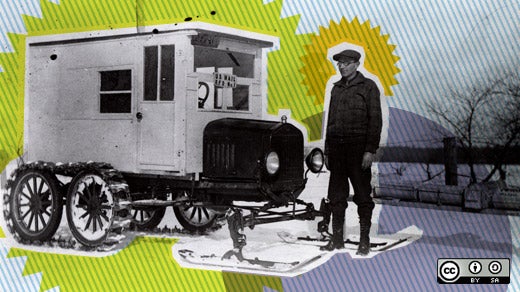Each year automobile companies try to predict what new features consumers will want in their cars. If their predictions are right, they are richly rewarded with increased car sales. If they are wrong, they suffer the financial consequences.
But wait, is that the best way to design cars? What if car companies invited consumers to the table as equal partners in the design process? The way I see it, consumers could be buying cars they co-designed—reducing the gigantic financial risk to car companies, not to mention the waste of never-purchased vehicles.
Right about now is an opportune time to completely rethink the purpose of the car. In case you hadn't noticed, cars of today look roughly the same as the cars of 50 years ago. Not only do cars transport people, but they also perform another vital function. They transport food and other commodities to our homes, which can be very fuel inefficient and waste a lot of personal time. A simple trip to the supermarket can easily take an hour, and though we may not notice from trip to trip, in the longrun this equates to a great deal of time spent just transporting food.
What I see as "lost time" is time that could be used for a thousand other worthwhile purposes, especially in a knowledge economy, where increased learning can give a nation a competitive advantage. So, how can redesigned cars pare away the inefficiencies of food purchasing, for example?
Here's what I would tell the car companies at the roundtable: New cars should have a rectangular-shaped container, or bin, on their roofs to receive food dropped via robot arm at the supermarket (renamed: "food distribution center"). This process would begin by placing an order online sometime before departing. Once arriving at the center, you would use the lane designated to accommodate you and your order, thanks to your new car's innovative design. Payment would occur wirelessly, using a system analogous to the EasyPass system employed for highway tolls. Technically, you wouldn't even have to stop; just slow to 5 MPH and roll on through.
Total time for the transaction? Less than two minutes.
Food distribution centers would no longer need parking lots, because you wouldn't be getting out of your car. And the efficiencies are even greater for the distribution of prepared foods. Suppose you wanted a large casserole to feed your family for dinner. You order the casserole from your tablet, cell phone, or computer, and when you drive through the prepared food distribution center, the food is lowered into your rooftop container. Vegetarians would get an especially good deal, because vegetarian food costs less than a fifth the cost of meat per pound of protein.
Labor costs for the food distribution center would be minimal too. And the resulting efficiencies would bring benefits to all members of society, as we'd be collectively "doing more with less." Granted, the scenario described above requires involvement of companies beyond car companies. The food distribution centers and prepared food distribution centers would need to be on board.
Pilot projects could happen pretty quickly, though, and their successes would affirm the direction in which our nation should be heading. But, would there be resistance to such innovations from existing businesses? You bet there would be resistance. No business likes to see its model change so dramatically. And yet stagnation bears a heavy cost. We must move forward as a nation, and as a planet, to greater efficiencies and less waste of natural resources and human time.
Involving consumers as co-designers is the most logical way to proceed with such transformations. We must start having personal and public conversations on where we are headed and the best ways of getting there. By pooling our brainpower and creative thinking, the solutions will reveal themselves to us. Then it becomes a matter of setting up realistic timetables and goals and proceeding with our agreed upon plan.
Food for thought
Is the maker community the right place for innovation of this kind?
How can existing food workers keep their jobs and be retrained for new roles?
Can consumers be involved in the recipes of the prepared foods they purchase?
How can people with special dietary needs benefit from innovation in food preparation, purchase, and delivery?
Note: Phil is also a proponent of fuel efficienct compressed air cars and recommends this video.






1 Comment